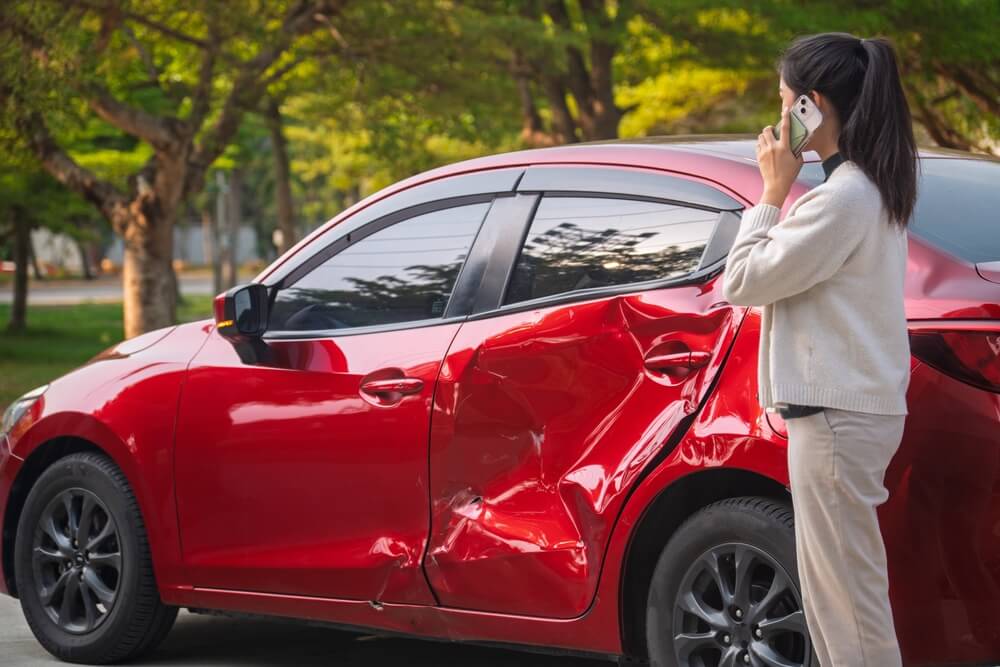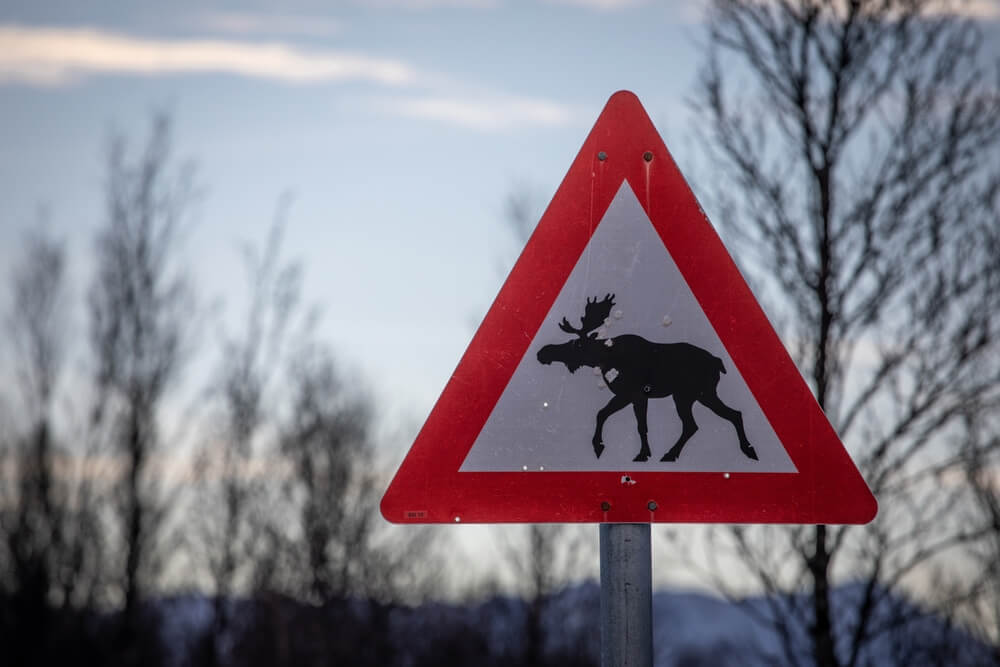
If you are not redirected within 30 seconds, please click here to continue.
Samedi: 10h – 16h HAE

If you are not redirected within 30 seconds, please click here to continue.
If you are not redirected within 30 seconds, please click here to continue.
Here’s How to Be a Better Driver

Table of Contents
Driving is hard. No, seriously. Driving is hard. That’s the whole point. And while cars and roads get safer each year, crashes still happen. In a sea of distracted, inattentive or dangerous drivers, we should all aim to be better behind the wheel.
We asked our team at Rates.ca to tell us some of their pain points while driving and took the time to explain in detail how to avoid, mitigate and improve each of these issues. We found some common themes: potholes, distractions, parallel parking, and merging all make us cringe.
Luckily, the cures for most driving problems are the same:
- Keep your eyes high and your vision as far forward as you can
- Seat yourself properly in your car
- Set your mirrors correctly
- Make smooth, well-planned, and decisive movements
“I have trouble avoiding potholes.”
This is an issue of vision and spatial awareness. Potholes are only surprising if you’re driving too close to another car or not looking far enough up the road. You need a surprisingly small amount of room to dodge most potholes. If you see one early enough, it’s simple to drift to where your tires will miss it smoothly.
The secret to avoiding potholes is twofold. One, get a clear idea of where your front tires are by using the dead pedal in your footwell and seating yourself correctly in the car.
Two, look where you want to go and keep your vision high. Humans have remarkable abilities when it comes to filling in our peripheral vision, so once you’ve noted a pothole, keep it in mind, but don’t focus on it. Look long beyond it, and you’ll miss it with a smooth, even movement that doesn’t impact other drivers.
“Parallel parking... cars aren’t meant to go sideways!”
Parallel parking is indeed difficult, but luckily there are dozens of guides online, and they all work! First, make sure your mirrors are set correctly and you’re seated properly in the car, then:
- Line up about two feet from the car you’re going to park behind, fully alongside it
- Turn your steering wheel one turn to the right
- Reverse slowly until your right-hand side mirror is lined up with the left-hand rear taillight of the car next to you
- This is about the point your front bumper is lined up with that car’s rear tires and when you should turn your wheels fully to the left (all the way to the steering stops) and continue to reverse slowly
- Use your mirrors to spot your position. Your car should end up straight and right alongside the curb when you’re close to the car behind
- Pull forward slightly, turning a little bit toward the curb to fully straighten yourself
- Job done!
“Other drivers!” / “Mass disobedience of driving rules!/ Anticipating inexperienced drivers.”
Bad drivers are frustrating. Whether they’re incompetent, inexperienced, nervous, reckless or selfish, we all know when we spot one, and we all know how much we hate them. The honest truth is that’s life. No matter where you go or what you do, not everyone will align with your views on what the world should look like — especially not on the roads.
However, you can mitigate the impact of dodgy drivers though. Ask any motorcyclist! They spend their lives actively trying to be seen because the risks are high, and they know it’s harder for drivers to see them. The solution? Road positioning, vision, and attention.
For example: never sit in someone’s blind spot; if you are, just fall back slightly or forward until you’re fully in view. As you approach intersections, scan the intersection for oncoming traffic, and make sure you’re as visible as possible. If it’s safe to be in the left lane, move across to it briefly so you’re not obscured by parked cars or street signs.
If you’re on the highway, try to pre-emptively make a gap for cars to merge into when they come down the on-ramp or move entirely into the next lane. Doing this will give everyone more time and room to react, even to the most nervous and tentative mergers.
“Merging / When there is a long line to make a left turn/ or two lanes go down to one lane/ and other people just cut in front of you.”
This one is tricky. In some cases, people who cut in front when two lanes go down to one are actually in the right. The zipper merge is how roads were designed to be used. That means when lanes merge, one car should let in one car each, like a zipper.
People who drive to the end of the finishing lane and then merge in are correct. And those people who drive along right up the back of the car in front and don’t let anyone merge are the main reason traffic gets bad at merge zones. The solution is to actively anticipate and make space when you see a lane ending up ahead. Driving takes cooperation.
If you’re merging onto a highway, the idea is to use the on-ramp to accelerate up to traffic speeds and time your entry into the live lanes. You should never slow down or stop on a merge lane unless necessary, and if you do have to accelerate into a gap in the live lanes, do so confidently and assertively. Timidity is your enemy here. As for people who drive to the end of the slip lane (a.k.a. turning lane) and then dive in — well, those people are just horrible. But that’s just the way it goes sometimes.
“I have trouble driving at night!”
The major reason people have trouble driving at night (apart from vision-related issues) is that they focus too closely in front of themselves when driving. Doing this makes the white lines blur together, and it’s disorientating. This is worse at night than during the day because the contrast is higher, and our eyes are already working overtime. Because our eyes are focused on the dark road directly in front of the car, the headlights from oncoming cars seem brighter and more distracting.
The solution is familiar — look up. The further down the road you look, the less the harsh lights and white lines affect your vision and perception. You should look as far ahead as possible, and scan back towards your car, then return your vision to the horizon and repeat. This will train you to pick up the important, immediate details while helping you focus on where you’re going.
General driving tips
What is the best seating position for driving?
Start with your seat base. Put your foot under the brake pedal, against the footwell, and push back; your leg should be slightly bent at the knee, with your bottom pressed back into the seat all the way.
Pull your seat forward (or slide it back) until you get to this position. Then, put your arms over the top of your steering wheel; your wrist should rest on top of the wheel (at 12 o’clock), with a slight bend in your elbow and your shoulders firmly against the back of your seat.
Straighten or recline your seat until you find that position. If you have a tilt and telescoping steering wheel, you can adjust it to get to the right place. Be careful not to have your seat too upright, as you’ll be cramped and lack control.
The reverse is also problematic. If your seat is overly reclined, you’ll be too laid back. It looks cool in music videos, but a steep recline harms your control and your vision. If you have a seat height adjuster, put your fist between your head and the ceiling, and set your seat bottom so that the gap is about that big. This helps vision. Oh, and hold the wheel at nine-and-three, always.
Train your vision
As we mentioned, vision is vital, and you can train yourself to see more and be more aware behind the wheel.
Step one is to set your mirrors. Some people believe you should see the back corner of your car in your side mirrors, but this is wrong. Open them out slightly, so the corners are only visible if you move your body left or right to look in the side mirror. If you adjust them so you can no longer see the corner of your car, you’re not filling your whole rearward area with mirror coverage.
A car coming past should disappear from your rear-view right as they’re entering your side mirror and then exit your side mirror right as they enter your peripheral vision. After that, practise looking as far ahead as possible while regularly checking your mirrors.
Take a mental note of upcoming obstacles and road features while noting things around and behind you. “What’s behind you doesn’t matter” is a great inspirational poster, but it’s rubbish driving advice.
This will save you money. Seriously.
If you look as far forward as possible when driving, you will drive straighter, smoother, and even save fuel!
Good, smooth driving is better for fuel economy than every bolt-on device, aerodynamic aid or special fuel additive can ever be. Your right foot can make a 25% difference in your monthly fuel bill. Not only that but avoiding crashes, whether they are your fault or not, will save you time and money and is a good way to lower your insurance premium.
Don't waste time calling around for auto insurance
Use Rates.ca to shop around, and compare multiple quotes at the same time.
Get money-saving tips in your inbox.
Stay on top of personal finance tips from our money experts!










